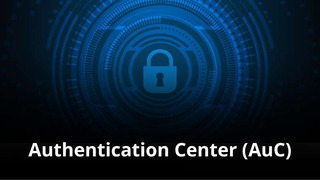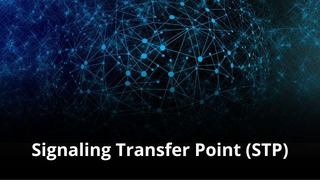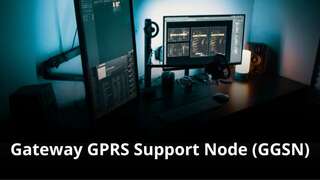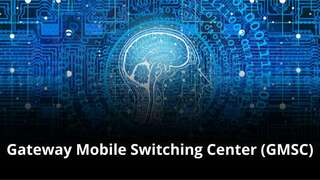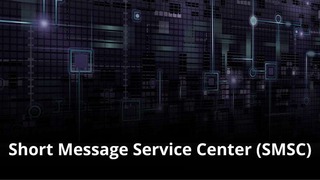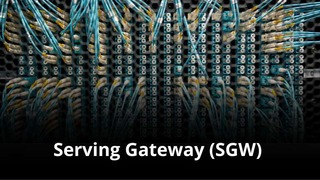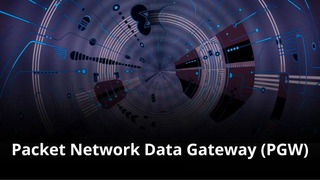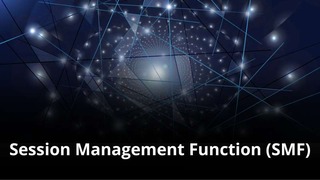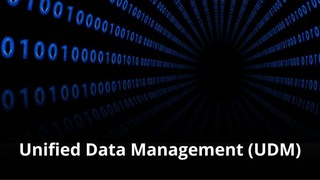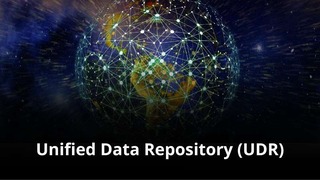Introduction about the Unified Data Repository (UDR)
The Unified Data Repository (UDR) is a critical and foundational component within the architecture of the 5G Core (5GC) network. Understanding its purpose is essential for comprehending how 5G networks centralize and manage all subscriber-related information, separating it from the functions that use the data. This entity acts as the central, authoritative, and permanent database for all subscriber data, policy profiles, and structured application data. You can think of it as the network’s master “Subscribers and Services” record system. It is crucial for any operator aiming to uphold data consistency, efficiency, real-time policy enforcement, and rapid service deployment in their 5G environment.
What are the details of a Unified Data Repository (UDR)?
- History and Evolution of the Unified Data Repository
- Core Utility and Functionality of the UDR
- Technical Integration and Data Model
- UDR Ownership for MVNOs and IoT Companies
- Organizational Impact of UDR Ownership?
- Redundancy and High Availability
- Impact of 6G, Data Federation, and Cloud-Native Architectures on the UDR
- Frequently Asked Questions about the UDR
- Summary
History and Evolution of the Unified Data Repository (UDR)
The concept of subscriber data management began in 4G (LTE) with the Home Subscriber Server (HSS) and in 2G/3G with the Home Location Register (HLR). The HSS was a monolithic entity that combined data storage with data access logic (authentication vectors, policy rules). With the shift to 5G Core (5GC), this function was disaggregated: the data storage function became the UDR, and the data access and processing function became the Unified Data Management (UDM). The UDR was created to be a highly scalable, single repository that decouples the data from the network functions that use it. Its architecture is built on modern database principles, ensuring it can handle the immense data volume and real-time query demands of massive IoT (mMTC) and diverse 5G services.
Core Utility and Functionality of the UDR
What is the UDR Used For?
The Unified Data Repository (UDR) is the definitive source for all permanent user, policy, and session data in the 5G core. Its primary purpose is to store and retrieve structured data based on requests from the Unified Data Management (UDM) and other network functions. It maintains a precise, real-time record of every subscriber’s permanent profile, including their allowed services, authentication keys, and charging parameters. It is crucial for ensuring that all network functions (AMF, SMF, PCF) consistently apply the correct and authorized policies to every subscriber, regardless of where or how they connect.
Key Functions of the Access and Unified Data Repository (UDR)
Lets investigate the core functions of the Unified Data Repository (UDR) to understand its critical role in 5G network operations:
- Data Federation (Optional): Supports the integration and access of data from multiple backend data stores (e.g., legacy HSS, external CRM) under a single unified view.
- Authentication Key Storage: Securely holds the long-term security credentials (keys) required to generate authentication vectors for the UE during the registration process.
- Policy Profile Storage: Maintains the static and dynamic policy data (e.g., service tiers, allowed data limits, policy rules) used by the Policy Control Function (PCF).
- Data Consistency: Enforces a single, consistent view of subscriber data across the entire 5G network, eliminating data conflicts and ensuring reliable service delivery.
- Real-Time Query Response: Provides high-speed, low-latency access to any piece of stored data upon request from authorized Unified Data Management (UDM) instances.
- Data Persistence and Recovery: Ensures that all stored data is non-volatile, highly persistent, and quickly recoverable in the event of hardware or software failure.
- Application Data Storage: Stores specific, structured application data (e.g., user preferences or service state) used by external Application Functions (AFs), further integrating the network & application layers.
- Notification Mechanism: Supports a publish/subscribe model, allowing network functions to subscribe to changes in a user’s profile and receive automatic notifications when data is updated (e.g., a policy change).
- Subscriber Profile Storage: Stores the permanent subscription data for every user, including their International Mobile Subscriber Identity (IMSI) and allowed service entitlements.
Technical Integration and Data Model
The UDR’s primary interface is with the UDM, but it also provides direct access to other NFs for specific data:
- UDM (Unified Data Management): This is the main client, accessing the UDR over the N8 and N10 interfaces to retrieve subscriber data and authentication keys.
- PCF (Policy Control Function): Accesses the UDR over the N17 interface to retrieve static policy rules associated with a subscriber.
- CHF (Charging Function): Accesses the UDR over the N33 interface to retrieve relevant charging parameters.
- NRF (Network Repository Function): The UDR registers its service with the NRF to be discoverable by authorized clients.

Technical Data Model and Key Interfaces
The UDR employs a sophisticated Technical Data Model designed for massive scale and speed, often utilizing NoSQL or NewSQL technologies. The model is centered around the concept of a Subscriber Record, encompassing all permanent data points. Key interfaces utilized by the UDR are exclusively based on the HTTP/2 protocol and the Service-Based Architecture (SBA):
- Nudr (Service-Based Interface): This is the central API through which all authorized 5GC functions communicate with the UDR.
- RESTful APIs: The interfaces are defined using standard RESTful principles, enabling functions to read (GET), write (PUT/POST), or delete (DELETE) subscriber data via URI-based requests.
- Subscription Model: The UDR supports subscription requests from clients, allowing it to notify them when specific data fields change, rather than requiring constant polling.
UDR Ownership for MVNOs and IoT Companies
Why Own a UDR?
For an MVNO or an IoT company, owning a dedicated Unified Data Repository (UDR) (often a logical instance within a shared platform) is essential for operational independence. The UDR is the single source of truth for their subscribers. Owning it allows these companies to gain complete control over subscriber provisioning, policy rule creation, security key management, and data ownership/privacy. This is crucial for: 1) rapid introduction of customized IoT service profiles; 2) ensuring security keys are never shared with the host MNO; and 3) maintaining full data integrity and compliance with their own regulatory and privacy requirements, which is difficult to guarantee if subscriber data is hosted on a shared MNO system.
Advantages and Disadvantages of PCRF Ownership
Complete Data Autonomy and ownership for compliance and privacy regulations.
Independent Provisioning of new subscribers, service profiles, and policy rules without MNO intervention.
Customized Data Schema to support unique IoT devices or application-specific data storage.
Enhanced Security and cryptographic isolation of authentication keys (Ki) from the host network.
Seamless Integration with the company’s own Customer Relationship Management (CRM) and OSS/BSS systems.
High Initial Investment in a specialized, geographically redundant, high-capacity database system.
Operational Complexity requiring expertise in large-scale distributed database management and high availability design.
Maintenance and Upgrade Costs for a mission-critical, 24/7 database that must never fail.
Latency Sensitivity—accessing subscriber data must be ultra-fast to avoid delays during registration/session setup.
Interconnection Challenges with the host MNO’s shared UDM/AUSF instances for authentication/policy logic.
Organizational Impact of AMF Ownership
Analyzing the organizational impact of owning a Unified Data Repository (UDR) across various business units.
Operational Impact: Requires the establishment of a dedicated technical team proficient in distributed database administration, data modeling, high-volume transactional integrity, and security key management. This team will monitor database performance, manage storage capacity, and ensure data consistency across multiple access points. Recruitment of specialized database architects and security experts is mandatory.
Financial Impact: Evaluate the significant capital expenditure (CapEx) for the initial database software licenses and the highly resilient physical infrastructure (servers, storage arrays). High ongoing operational expenditure (OpEx) will cover salaries for expert database administrators, power/cooling, and continuous data backup/archiving solutions.
Commercial Impact: Leverage the UDR for its ability to rapidly create and launch new service plans by immediately updating subscriber policy profiles. This gives the business a fast and flexible way to respond to market demands with granular, differentiated service tiers.
Technical Impact: Mandates the implementation of rigorous security controls (encryption at rest and in transit) to protect the sensitive authentication and personal data. The company assumes end-to-end responsibility for the confidentiality, integrity, and availability of all subscriber data.
Redundancy and High Availability

The Unified Data Repository (UDR) is the most critical data component in the 5G core; therefore, Redundancy and High Availability (HA) are absolutely paramount. The UDR must be deployed in a fully redundant, geographically distributed cluster configuration, leveraging the native replication capabilities of modern distributed databases. Active-active replication across multiple sites is standard practice to ensure that subscriber data is always available, even during a catastrophic failure. Rigorous data consistency and conflict resolution mechanisms are essential to guarantee that a user’s profile is identical regardless of which UDR instance services the request.
Impact of 6G, Data Federation, and Cloud-Native Architectures on the UDR
UDR’s Transition
The UDR is the template for data management in future networks. It successfully separated the data from the processing logic (UDM). Its ongoing evolution focuses on integrating external data sources and increasing query speed.
6G, Data Federation, and Cloud-Native Architecture
In the 6G core, the UDR’s function will evolve toward Data Federation. Instead of strictly storing all data, it will become an intelligent data broker, providing a unified, abstracted view of subscriber and application data that may be physically stored across multiple internal and external databases (e.g., edge data stores, third-party clouds). It will use advanced querying techniques to provide low-latency access to the massive, distributed data sets required for applications like ubiquitous sensing and holographic communications. The fundamental role of the UDR—the centralized, authoritative data layer—will remain, but it will be implemented using distributed, event-driven architectures for ultimate scalability.
Frequently Asked Questions about the Unified Data Repository (UDR)
1. What is the main function of the UDR?
The primary function is to serve as the highly available, permanent repository for all subscriber data, authentication keys, and policy profiles in the 5G core.
2. What 4G function is the UDR derived from?
The UDR is the data-storage portion of the 4G Home Subscriber Server (HSS), with the access/logic portion delegated to the Unified Data Management (UDM).
3. What is the Nudr interface?
The Nudr interface is the service-based API through which the UDM, PCF, and other authorized NFs communicate with the UDR to retrieve and update subscriber data.
4. Why is the UDR critical for security?
The UDR securely stores the long-term authentication keys (Ki), which are necessary to generate the credentials used by the network for secure user registration and access.
5. What is Data Consistency in the context of the UDR?
It ensures that all network functions accessing the UDR receive an identical and up-to-date version of a subscriber’s data, preventing service errors due to conflicting information.
Summary
The Unified Data Repository (UDR) is the central, authoritative database that manages all permanent subscriber and service policy data in the 5G Core (5GC). Acquiring and operating a dedicated UDR offers MVNOs and IoT companies significant advantages in data autonomy, security key isolation, and independent profile provisioning. However, this decision involves managing a complex, mission-critical, highly available database system that requires specialized expertise. Its conceptual role—that of the master subscriber record—is the foundation for network automation and service intelligence in all future mobile networks.
